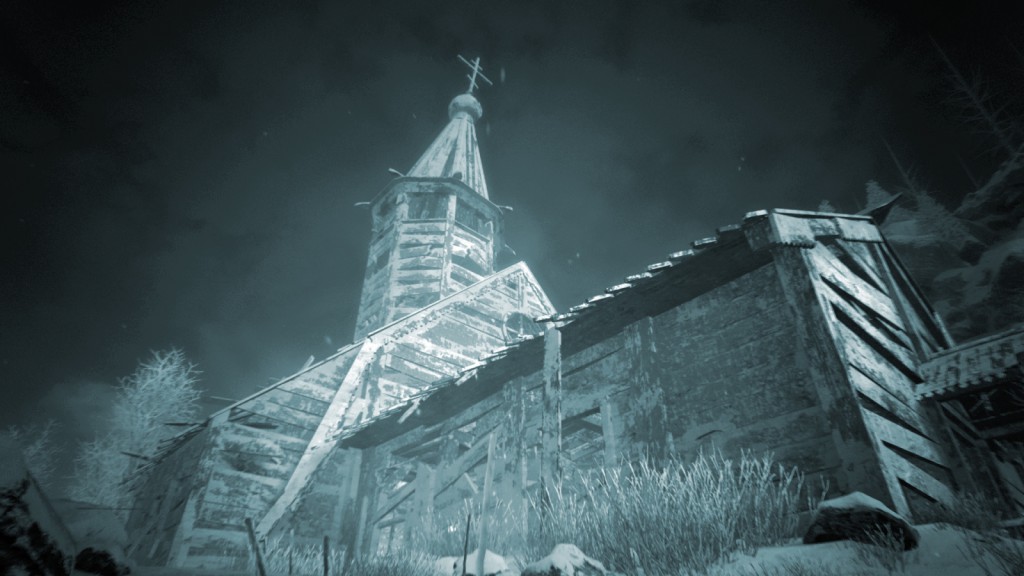AI is disrupting education. But despite what the headlines (and some ChatGPT horror stories) might suggest, South African teachers aren’t being replaced — they’re…
5 shocking games based on real life events

Video games are a medium we use to escape the harshness of reality, providing gamers with a plethora of fantastical digital worlds and magical creatures beyond our wildest imaginations. But sometimes the truths behind these fictional works are stranger, and often considerably more terrifying, than you could have ever imagined.
What follows is a list of five games inspired by shocking realities.
Note: This article contains sensitive subject matter concerning death and murder. Proceed with caution.
Kholat – The Dyatlov Pass Incident
Kholat is a beautiful but terrifying indie survival horror game based on the eerie and unsolved Dyatlov Pass Incident. In the winter of 1959, ten young skiers, all students and peers from the Ural Polytechnic Institute, started their hike into the Russian Ural Mountains. The group were all experienced Grade II hikers and with this very journey were looking to earn their Grade III, the highest level offered by the Soviet Union at the time, which required an individual to have at least 300km of hiking experience.
The journey already had a shaky start when one of the members had to abandon the trek on the second day due to growing health issues. But this was followed by even further complications when the remaining group got lost in severe weather conditions and found themselves off-trek on the Kholat Syakhl Mountain (aka “Dead Mountain”).
Unbeknownst to them, this would be the end of their journey.
When Igor Dyatlov, the leader of the expedition, failed to send a telegram to confirm the completion of their trek, various family members of the hiking group requested that a search party be sent to locate them. The initial volunteer search party failed to find the missing hikers and eventually had to call in the help of the army and local Militsiya police force.
Days later, the hikers’ campsite was discovered totally abandoned.
According to the inspectors, their tent was severely torn from the inside and most of their belongings were left behind, indicating that they fled the scene in a hurry, seemingly trying to escape from an unknown threat inside the tent. A trail of footprints outside the tent led the team to five of the now deceased hikers, whose bodies were discovered hundreds of meters apart. None of them were wearing shoes or proper weatherproof clothing, once again confirming their hasty departure from their tent. It took another two months before the bodies of the remaining four hikers were found. None had survived the incident.
The autopsies revealed that many of the hikers had broken and cracked bones, but strangely no soft tissue damage such as bruises or wounds. The degree of the injuries also ruled out the possibility of murder as the force behind them could not be inflicted by a human.
One of the hikers, Dubinina, was found in a considerably worse condition though. She had major external injuries and was missing her eyes, tongue, lips, and a skull fragment.
To add to the bizarreness, various other groups of hikers and nearby residents claimed to have seen strange “orange spheres” on the night of the incident, and those attending the hikers’ funeral said their bodies had a peculiar deep brown tan.
To this day, the Dyatlov Pass Incident remains unsolved.
The Town of Light – The Volterra Psychiatric Hospital
The Town of Light is an interactive psychological thriller that takes place in the 1940s at the Volterra Psychiatric Hospital in Italy. It tells the fictional story of ex-patient Renee, who has returned to the hospital to find some form of closure following the atrocities she experienced there as a teenager.
But while the story might be fiction, its inspiration and setting are chillingly real.
The hospital itself, for instance, is a faithful one-to-one recreation of the actual hospital that sprawls across the hilltops of Tuscany. Unlike the other entries on this list, which are based on specific events, The Town of Light is based on numerous disturbing letters, diary entries, and published books by former patients and staff of Volterra.
“Renee’s story has been created to be as credible as possible, it is similar to a lot of real stories, but it is completely fictional and totally written by us,” noted the game’s developer LKA.
“A huge work of research and documentation has been done to achieve it. We decided to act this way to pay respect to the huge amount of people who have really suffered those kinds of experiences. Renee is like a small icon of a worldwide historical drama.”
Considering this statement, coupled with the atrocities that 16-year-old Renee experienced at Volterra, such as sexual abuse, rape, abandonment, loneliness, and man-handling (this barely scratches the surface), you can imagine what a horrific experience The Town of Light can be.
In a way, Renee acts as a composite for multiple experiences of numerous individuals, not only at Volterra, but at various mental institutions of the time; a time when the diagnosis and treatment of mental illness wasn’t backed by any real academic facts. A woman with sexual urges, a man drunk in public, or anyone that didn’t fit into society’s standards of normality… all of these were considered credible reasons to have a person institutionalised.
And the treatments? Anything from shock therapy and forced labour to being tied to a bed for days at a time, none of which ever had any real effect and lead to most of the patients spending almost their entire lives locked up in a place that treated them like guinea pigs.
The truth behind The Town of Light makes it one all the more shocking and just comes to show that humans can be more terrifying than any other fictional demon or monster they imagine.
That Dragon, Cancer – A tragic tale of loss and grief
While the other entries on this list are based on eerie and scary events, That Dragon, Cancer is based on a deeply heartbreaking and sombre story.
The multi award-winning game was, in-part, created by Ryan and Amy Green who based the game’s narrative on the loss of their young son, Joel, to terminal cancer.
The game chronicles the events from Ryan and Amy discovering that one-year-old Joel has cancer, up to his eventual death. The story is told over fourteen vignettes, each exploring pivotal and highly emotional moments during Joel’s fight with his disease.
Even if you’ve never been a parent, That Dragon, Cancer does a remarkable job of putting you in Ryan and Amy’s shoes, allowing you to experience their hopelessness and grief with raw honesty.
That Dragon, Cancer does boast some religious undertones as both Ryan and Amy are religious Christians and it is definitely a theme that is explored. But the game certainly doesn’t try to convert you or detracts from the story. At its core, this title is about loss, hope, and the search for meaning in times of great pain. The death of a child is unimaginable, a young, innocent and oblivious soul taken before they could even fully comprehend strange mess we know as life.
In stark contrast to a gaming world saturated with meaningless death and glamorized violence, That Dragon, Cancer celebrates the sanctity of life and explores the utter sorrow that comes with its end.
It’s raw and honest titles like this that truly show how special and poignant the medium of video games can be, not only as a medium of entertainment but as a tool of understanding.
L.A. Noire – The ‘Black Dahlia’ murder
L.A. Noire is an in-depth neo-noir investigation game where you play a 1947 LAPD detective and tasked with solving a range of gruesome and thoroughly perplexing cases, many of which are rooted in reality (although developer Rockstar has done a great job at reworking these cases into their own unique versions).
One of the most famous unsolved cases that L.A. Noire explores is the mystery of the Black Dahlia murder.
In January 1947, a mother and her child come across the corpse of young naked woman. Her body had been sliced in half at the waist and, apart from several missing pieces of surgically removed skin, her cheeks had been cut from the corners of her mouth to her ears (known as the Glasgow Smile), but strangely there wasn’t a single drop of blood to be seen (indicating that she was killed and drained of her blood elsewhere).
The scene was so bizarre that the mother initially thought it was a manikin. The young woman turned out to be an up-and-coming Hollywood actress, namely Elizabeth Short, who would later be known as the Black Dahlia, a moniker she received because of her love for wearing black clothing and as a loose reference to murder mystery film, The Blue Dahlia, released the year before.
In a nationwide collaboration between the LAPD and FBI, the investigators conducted several interviews and ran multiple record checks but the case never progressed, with the list of suspects growing to over a 150 people.
The only detail the police had to go on was that the murderer had skills in dissection as the body was mutilated with great precision.
The only true but futile break in the case was fingerprints found on an anonymous letter sent to the FBI that claimed it was from the Black Dahlia killer. Unfortunately, the fingerprints didn’t return any matches on their database and the case eventually ran cold.
To this day, the identity of the killer or the fingerprints found on the letter remain unknown, making the Black Dahlia murder one of the most infamous unsolved police cases in American history.
1979 Revolution: Black Friday – The 1979 Iranian revolution
1979 Revolution: Black Friday is a narrative-driven adventure game that takes place amidst the 1979 Iranian revolution against the Pahlavi Dynasty under Mohammad Reza Pahlavi, the last Shah of Iran.
You take on the role of photojournalist Reza Shirazi, who has returned to his homeland to find himself in the middle of a brewing revolution. As a journalist, it doesn’t take long for Reza to become involved in the unfolding events and soon he is faced with life-changing decisions and horrific occurrences.
While the game is a fictional work, its narrative is based on several troubling accounts from freedom fighters, witnesses, casualties, and civilian prisoners under the oppressive Pahlavi autocracy, touching events such as “Black Friday”, a turning point in the 1979 revolution where hundreds of protestors were killed by the Iranian military after the government declared martial law.
As the playable character, you are armed with a camera and tasked with taking various pictures throughout the game. Often, after taking the picture, your photo will be compared side by side with actual photographs — sometimes even videos — of the same events or moments and provided with historical insight into their significance.
It’s a fascinating process that immerses you in the role of a photojournalist and the history of the revolution, but at the same time reveals some harsh truths and truly shocking moments.
With its choice-driven gameplay, 1979 Revolution: Black Friday also highlights the moral dilemmas one could have faced in this period, emphasizing that in such a dire and sensitive situation, there rarely is a right and wrong answer, and that you have no control over the consequences of said choices.


